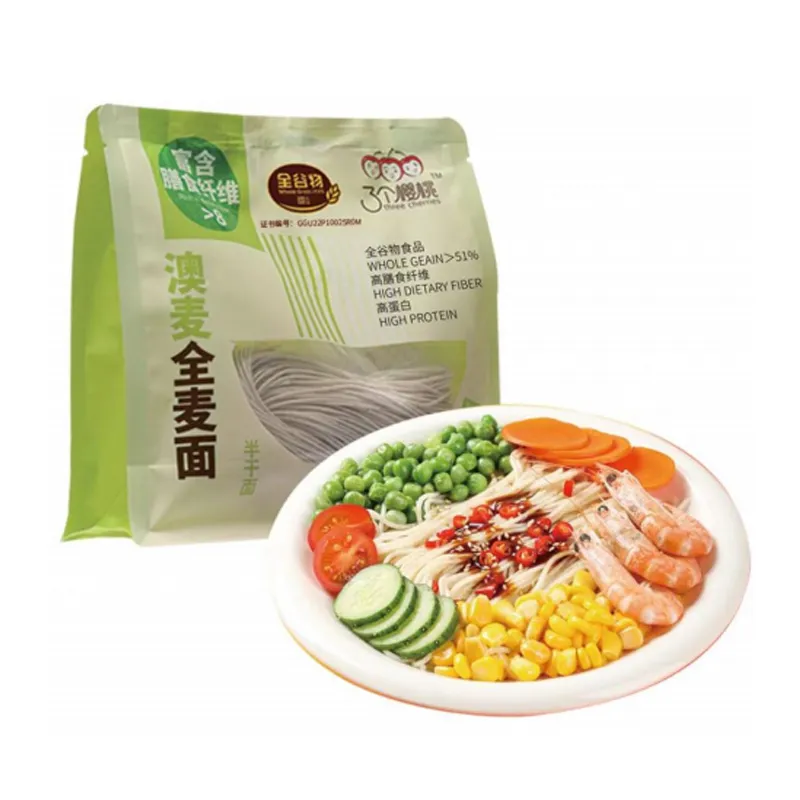egg noodles video
The Art of Cooking Egg Noodles A Culinary Journey
Egg noodles are a staple in many cuisines around the world, beloved for their rich flavor and versatile nature. Whether you're making a stir-fry, a comforting soup, or a classic pasta dish, egg noodles serve as the perfect base. In this article, we will explore the process of making egg noodles from scratch, highlighting the essential techniques and tips to ensure your noodles turn out perfectly every time.
Ingredients and Preparation
To begin your egg noodle journey, you'll need a few simple ingredients all-purpose flour, eggs, and a pinch of salt. The ratio of eggs to flour can vary depending on the desired texture; however, a typical recipe uses about two large eggs per cup of flour. This egg-rich blend gives the noodles their characteristic color and flavor.
Start by measuring out your flour into a large mixing bowl or onto a clean surface. Create a well in the center and crack the eggs into it. Add a pinch of salt to enhance the taste. Using a fork, gently beat the eggs, gradually incorporating the flour from the edges of the well. Continue until the mixture becomes too stiff to mix with a fork.
Kneading the Dough
Once the ingredients are combined, it’s time to knead the dough. Turn the mixture out onto a floured surface and begin kneading with your hands. The goal is to develop the gluten in the flour, which will give the noodles their desired chewiness. Knead the dough for about 5 to 10 minutes, until it becomes smooth and elastic. If the dough is too sticky, sprinkle a little more flour as needed.
After kneading, wrap the dough in plastic wrap and let it rest for at least 30 minutes. This resting period allows the gluten to relax, making the dough easier to roll out.
Rolling and Cutting the Noodles
After the dough has rested, it’s time to roll it out. Divide the dough into smaller portions to make it more manageable. Take one portion and flatten it with your hands. Using a rolling pin, roll the dough out into a thin sheet, approximately 1/8 inch thick. Dust with flour as necessary to prevent sticking.
egg noodles video

Once the dough is rolled out, it’s time to cut the noodles. You can use a sharp knife or a pizza cutter to slice the dough into your desired width. For traditional egg noodles, aim for about half an inch wide. Dust the cut noodles with flour to prevent them from clumping together.
Cooking the Egg Noodles
Cooking egg noodles is a straightforward process. Bring a large pot of salted water to a boil. Add the cut noodles and cook for 3 to 5 minutes, depending on the thickness. Fresh egg noodles cook much quicker than dried varieties, so keep an eye on them to avoid overcooking.
Once cooked, drain the noodles in a colander and rinse them briefly under cold water to stop the cooking process. Toss with a little oil if you're not serving them immediately, preventing them from sticking.
Serving and Enjoying
Egg noodles can be served in various ways. They are excellent in soups, such as chicken noodle soup, or tossed with a variety of sauces in stir-fries. One popular dish is the classic lo mein, where the noodles are stir-fried with vegetables, soy sauce, and your choice of protein.
Another delightful way to enjoy egg noodles is in a creamy Alfredo sauce, where the richness of the noodles complements the creamy texture perfectly. Don't hesitate to experiment with different flavors and cuisines!
Conclusion
Making egg noodles from scratch is a rewarding culinary experience that opens up a world of possibilities in your cooking. With just a few ingredients and some time, you can create delicious, fresh noodles that elevate any dish. So next time you're in the kitchen, consider whipping up a batch of homemade egg noodles—your taste buds will thank you!
-
Unleash Your Inner Chef with Delectable Italian Pasta CreationsNewsAug.01,2025
-
Savor Health and Flavor: Irresistible Soba Noodles for Sale Await!NewsAug.01,2025
-
Nourish Your Body with Premium Organic Ramen - A Culinary Delight AwaitsNewsAug.01,2025
-
Elevate Your Dishes with Our Exquisite Kinds of Egg NoodlesNewsAug.01,2025
-
Dive into Flavorful Convenience with Our Ramen OfferingsNewsAug.01,2025
-
Discover Exquisite Types of Naengmyeon and Chilled Soba NoodlesNewsAug.01,2025
-
Is Whole Wheat Pasta Healthy?NewsMay.30,2025
Browse qua the following product new the we

















































































































